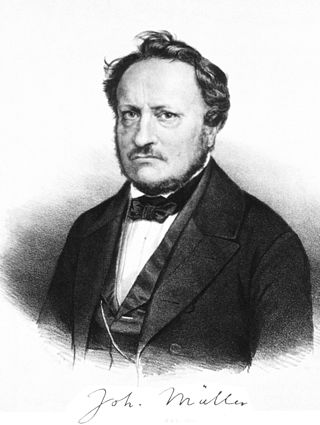
Johannes Peter Müller was a German physiologist, comparative anatomist, ichthyologist, and herpetologist, known not only for his discoveries but also for his ability to synthesize knowledge. The paramesonephric duct was named in his honor.

Adam Friedrich Oeser was a German etcher, painter and sculptor.
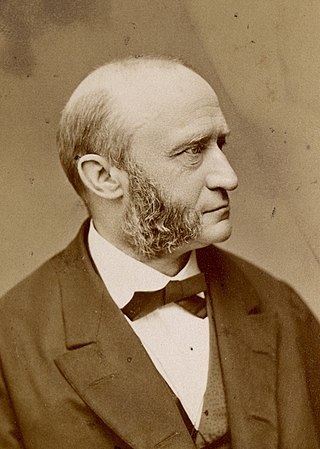
Ernst Wilhelm Ritter von Brücke was a German physician and physiologist. He is credited with contributions made in many facets of physiology.

Georg Amadeus Carl Friedrich Naumann, also known as Karl Friedrich Naumann, was a German mineralogist and geologist. The crater Naumann on the Moon is named after him.
Christian Rudolph Wilhelm Wiedemann was a German physician, historian, naturalist and entomologist. He is best known for his studies of world Diptera, but he also studied Hymenoptera and Coleoptera, although far less expertly.

Prof Karl (Carl) Theodor Ernst von Siebold FRS(For) HFRSE was a German physiologist and zoologist. He was responsible for the introduction of the taxa Arthropoda and Rhizopoda, and for defining the taxon Protozoa specifically for single-celled organisms.
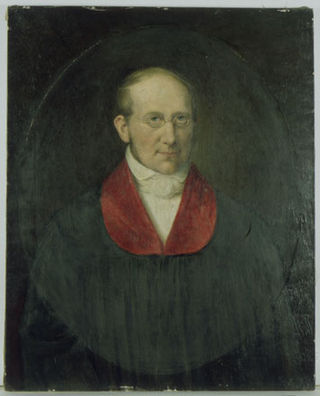
Hermann Friedrich Stannius was a German anatomist, physiologist and entomologist. He specialised in the insect order Diptera especially the family Dolichopodidae.

Karl Georg Friedrich Rudolf Leuckart was a German zoologist born in Helmstedt. He was a nephew to naturalist Friedrich Sigismund Leuckart (1794–1843).
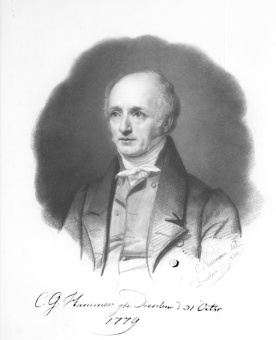
Christian Gottlob Hammer, baptized as Gottlieb,, was an influential German landscape painter and engraver.

Wanderer above the Sea of Fog is a painting by German Romanticist artist Caspar David Friedrich made in 1818. It depicts a man standing upon a rocky precipice with his back to the viewer; he is gazing out on a landscape covered in a thick sea of fog through which other ridges, trees, and mountains pierce, which stretches out into the distance indefinitely.

Franz Joseph Andreas Nicolaus Unger was an Austrian botanist, paleontologist and plant physiologist.

Carl Friedrich von Rumohr was a German art historian, writer, draughtsman and painter, agricultural historian, connoisseur of and writer about the culinary arts, art collector and patron of artists.

Christian Leberecht Vogel was a German painter, draughtsman and writer on art theory. His pupils included Louise Seidler, and he was the father of court painter and art professor Carl Christian Vogel.
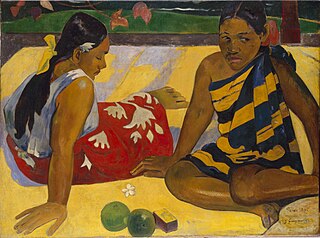
The Galerie Neue Meister in Dresden, Germany, displays around 300 paintings from the 19th century until today, including works from Otto Dix, Edgar Degas, Vincent van Gogh and Claude Monet. The gallery also exhibits a number of sculptures from the Dresden Sculpture Collection from the same period. The museum's collection grew out of the Old Masters Gallery, for which contemporary works were increasingly purchased after 1843.

Emma Sophie Körner was a German painter, a pupil of the Swiss painter Anton Graff, and sister of the poet and soldier Carl Theodor Körner.

Johann Ludwig Choulant was a German physician from the Kingdom of Saxony who was a professor of Medicine at Dresden medical historian and contributed to the study of the history of medicine. He was the father of architect Ludwig Theodor Choulant (1827–1900). He trained initially in pharmacy before shifting to medicine. A student of classical languages, he examined old works on medicine and produced an influential history of medical illustration which was translated into English by Mortimer Frank and others in 1920.
Johannes (Hans) Theodor Gustav Ernst Fitting was a German plant physiologist. He was the son of law professor Heinrich Hermann Fitting.
Franz Joseph Julius Wilbrand was a German forensic physician. He was the father of chemist Julius Wilbrand (1839–1906) who discovered TNT and ophthalmologist Hermann Wilbrand (1851–1935).
Agathon Gustavovich Fabergé was a partner in the famed Russian Fabergé jewelry company.

The Temple of Juno in Agrigento is an 1828-1830 oil on canvas painting of by Caspar David Friedrich. It is now in the Museum für Kunst und Kulturgeschichte, in Dortmund, which bought it from a Cologne art dealer in 1951. It is said to have been previously owned by the F. A. Brockhaus publishers in Leipzig.


































